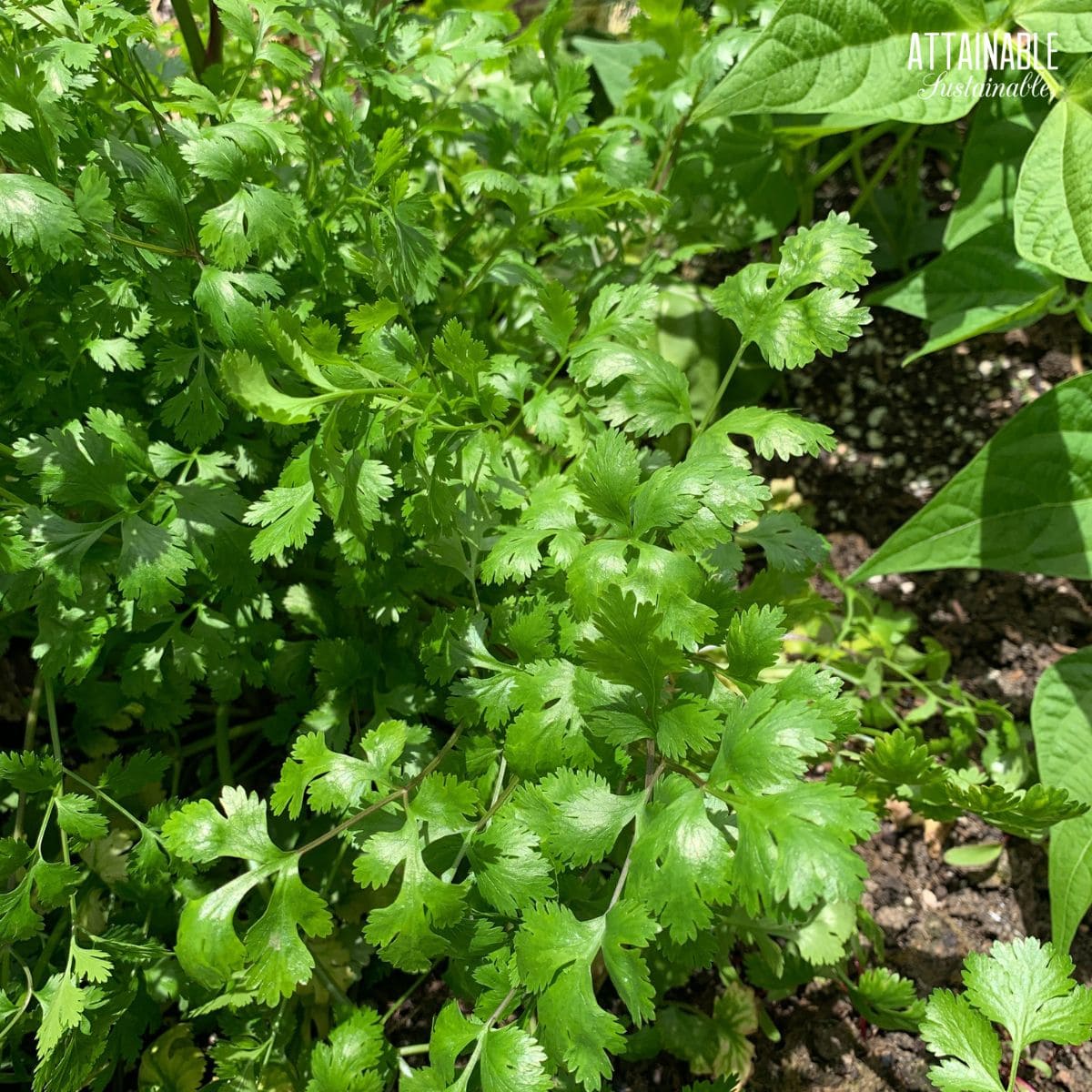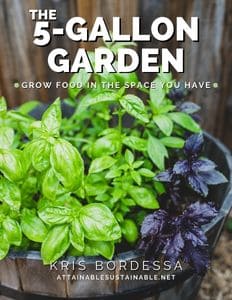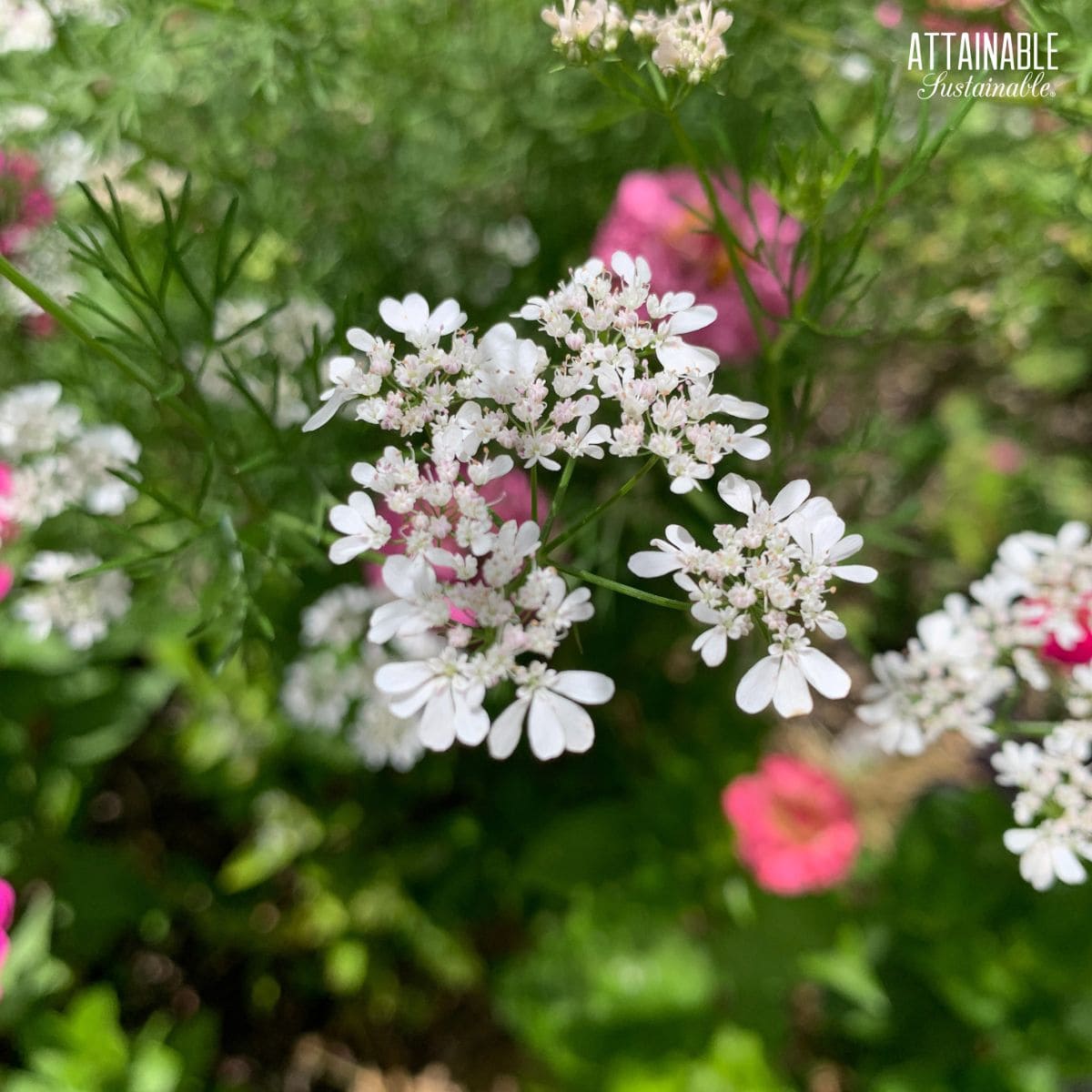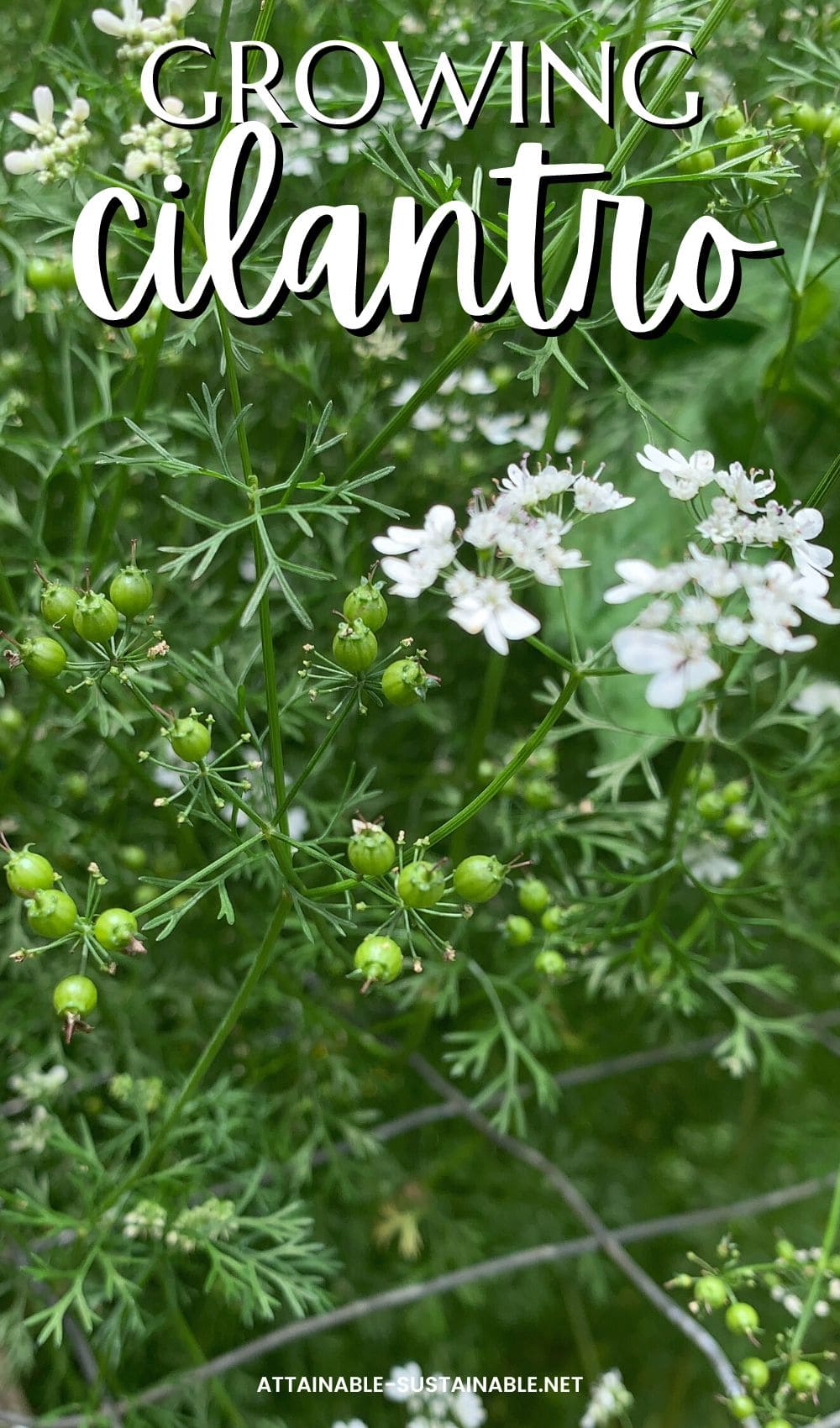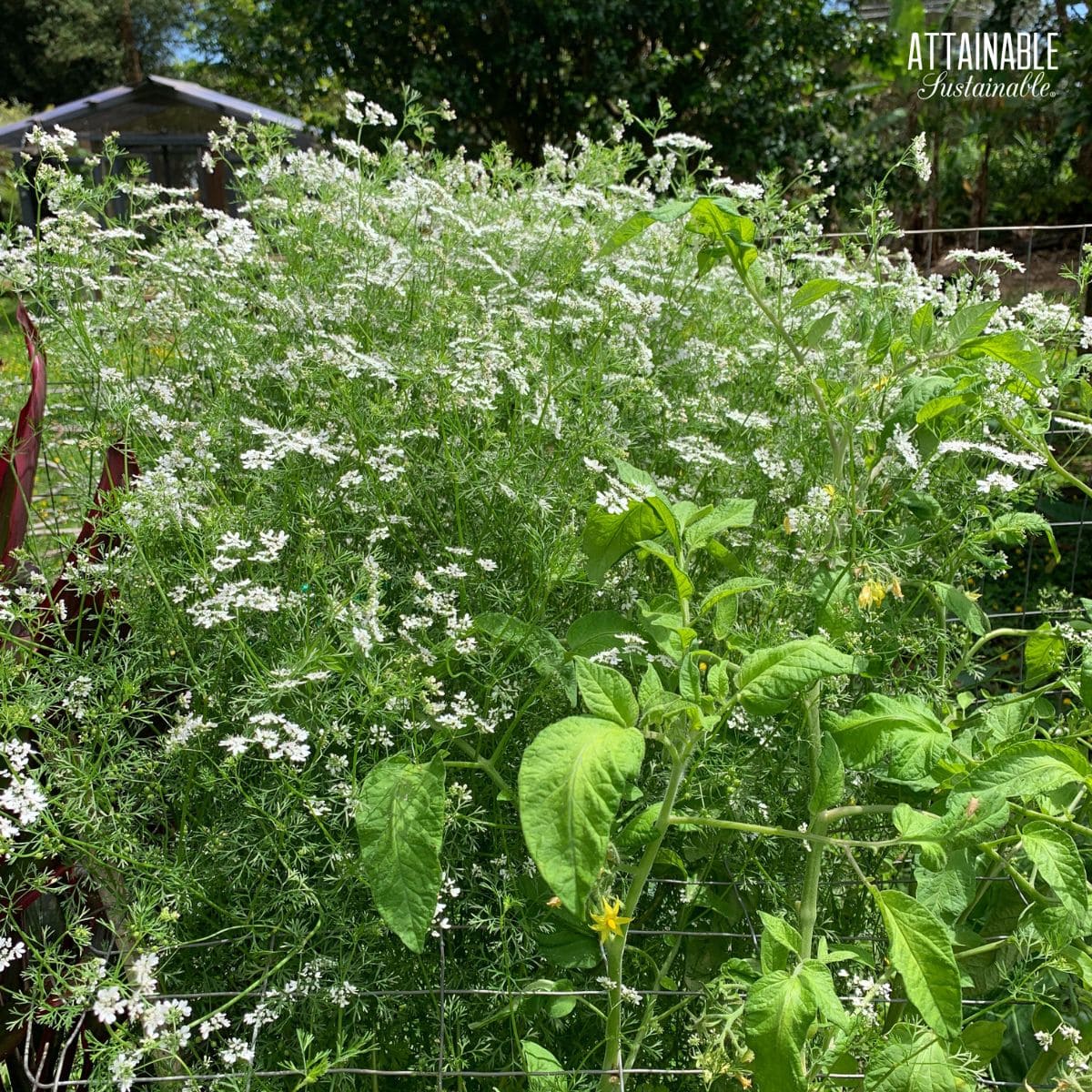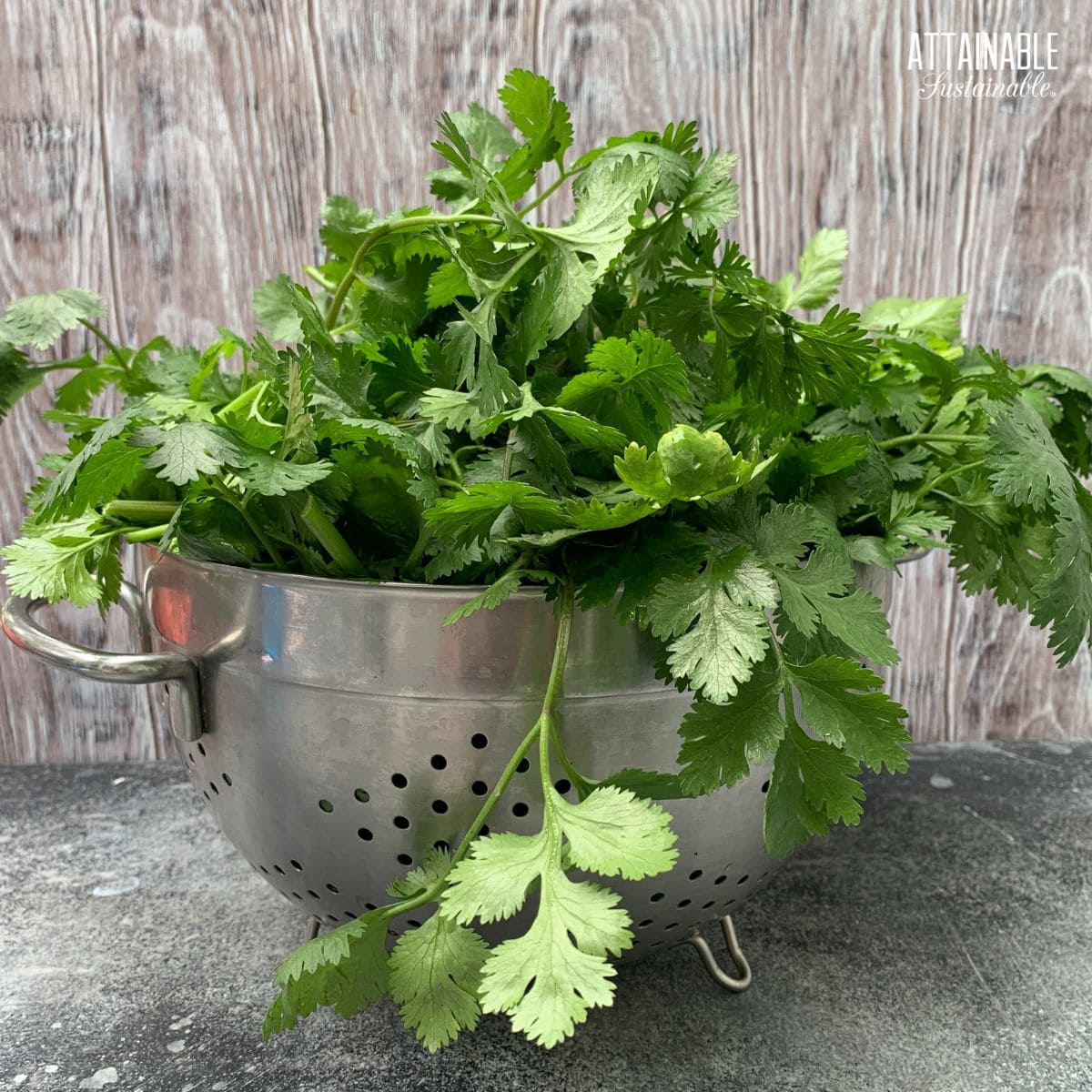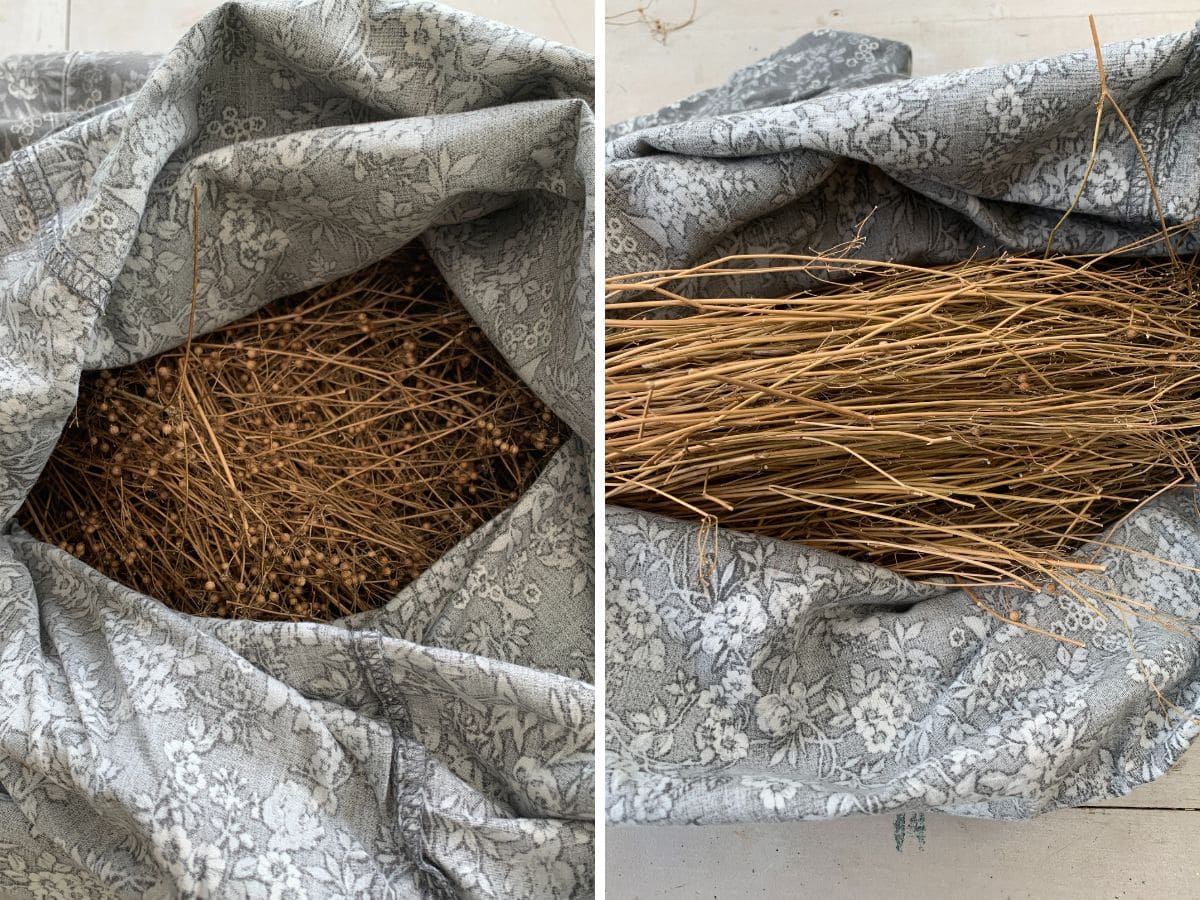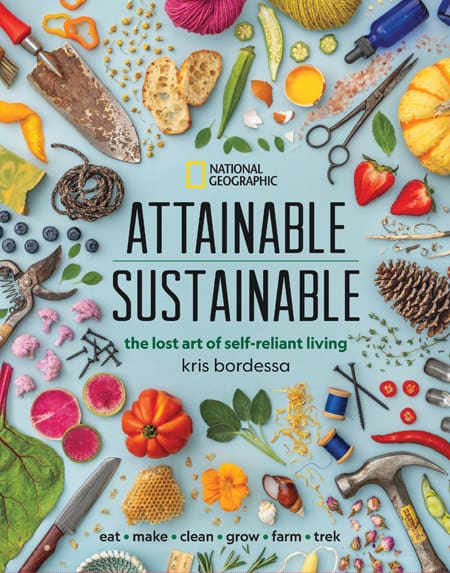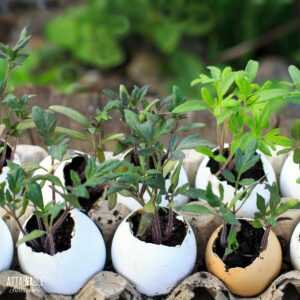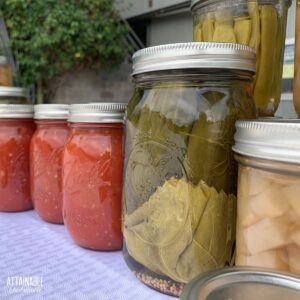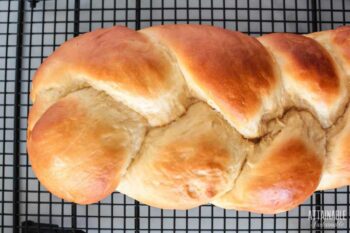Cilantro is an easy-to-grow herb that adds flavor to a variety of recipes. Read this cilantro growing guide to get started with this plant in your garden.
Getting to Know Cilantro
Cilantro (Coriandrum sativum) is a highly controversial herb, as herbs go. It seems that people either love cilantro it or hate it. People who are considered “super tasters” have a gene that causes them to find the flavor of the fresh leaves to be offensive. These super tasters frequently say that cilantro tastes like soap to them, though some suggests that it tastes like cat urine, dirty feet, stink bugs, or perfume smells.
This annual herb grows 18″ to 36″ tall, reaching its highest point when it begins to flower. Cilantro has a very short growing season, and needs to be planted regularly in the garden to assure access to this delicious herb.
New to gardening? Limited on space? The 5-Gallon Garden gives you the skills you need to grow food in the space you have. Get started with your garden today!
The leaves are broadly lobed at the base of the plant, and slender and feathery higher on the long stem that bears white flowers. The flowers are borne in small umbels.
When allowed to flower and go to seed, cilantro plants will develop seed heads with individual seeds that Americans know as coriander. Dried seeds are used in cooking and have quite a different flavor than the leaves. One plant, two great flavors!
Grow Some Greens!
Ready to grow fresh greens, no matter WHERE you live? Sign up for my
FREE quick-start guide and start growing some of your own food!
Cilantro is often confused with other herbs as well.
Cilantro vs. Parsley
You probably wouldn’t confuse cilantro with curly-leaf parsley varieties, but flat leaf parsley and cilantro can look deceivingly similar.
Cilantro vs. Coriander
In the US, cilantro and coriander are simply different parts of the same plant. The leaves, used often in Mexican dishes, are called cilantro. The seeds of the plant are what we know as the dried herb coriander, sold whole or ground.
In other parts of the world, the green vegetation of the plant is known as coriander, too, and recipes will note to use coriander leaves or coriander seeds.
To confuse things further, the coriander plant is also known as Chinese parsley.
Culantro is another herb that is often confused with cilantro.
Cilantro Varieties
There’s not a lot of difference in the flavor of cilantro between varieties. One thing to consider, though, is how long the plants will live and produce. There are a couple of varieties that have been bred to las longer in the garden: Santo Long Standing and Slow Bolt (sometimes spelled Slo-Bolt).
I’ve had good luck with the Slow Bolt variety in my garden.
No matter which variety you choose, these annual plants will go to seed eventually. They first send up a flower stalk on which dainty white flowers bloom. Those flowers develop into seeds that can be allowed to mature for harvest.
Starting Cilantro from Seed
Cilantro grows from seed easily; it’s rare to find seedlings at the nursery. In fact, it grows so easily that when it’s left to produce seeds, those that fall to the ground will often sprout and turn into volunteer seedlings.
You can plant seeds directly in the vegetable or herb garden after the last frost in your area, or in the fall, when the temperature has come down from its summertime highs.
Because cilantro tends to bolt quickly, use the succession planting method to make sure you have fresh leaves to harvest across a longer period of time.
Requirements for Growing Cilantro
Cilantro prefers cool weather, making it a great crop for spring and fall gardens. It tends to bolt during hot weather, going to seed quickly.
If you plan to let the plants complete their life cycle to harvest cilantro seeds, give them a little support, as when the plant flowers and develops seed heads, the tall stalks tend to fall over.
Light Requirements
Plant cilantro in full sun. It can tolerate some shade, and may even prefer it in very hot regions.
Soil and Fertilizer Requirements
This easy-to-grow herb prefers well drained soil rich in organic matter and requires little in the way of fertilizer.
Water Requirements
Keep these plants well-watered, maintaining a consistent moisture in the soil.
Common Pests
The plants are pretty pest resistant and are rarely (if ever) bothered by the common pests that frequent my garden.
The plants do attract hoverflies and predatory wasps if allowed to flower. These beneficial insects feed on aphids, thrips, and can parasitize caterpillars.
Growing Cilantro in a Pot
Make sure there is enough soil in the container to accommodate cilantro’s deep tap root. A planter that is at least 12″ deep is your best bet.
Ensure the container has holes in the bottom to help water drain away from roots to keep plants healthy. Cover the drainage holes with paper coffee filters to keep the soil in place.
Fill containers to 2 inches below the rim with a quick-draining potting soil meant for container plantings. To give plants a good start, mix in a granular slow-release fertilizer before planting.
If using transplants, dig a small hole in the soil and place plants at the same depth as they were in their container. Gently firm soil around roots and water slowly at soil level to help plants get settled in.
Harvesting
The coriandrum sativum plant is edible in its entirety; leaves, stems, roots, and seeds can all be added to your meals.
Cilantro leaves should be clipped close to the base of the plant. Harvest leaves as you need them; these fragile leaves don’t dry well. I prefer to freeze them in a little olive oil for use during the off season.
To harvest the coriander seeds, allow the seeds to begin to dry on the plant, then cut the stems down. Place the stems in a paper bag or pillow case and set aside in a dry place for several weeks or so.
Once the stalks and seeds are dried, rub the stems between your hands to remove the seeds from stalks. Carefully pick the chaff from the seeds and store the edible seeds in an airtight container.
Saving Seeds
The same seeds that you save for adding to recipes (coriander) are what you’ll plant in the garden. Store coriander seeds for planting in an airtight container in a cool place.
Using Cilantro
Add fresh cilantro leaves to recipes like fresh tomato salsa, tacos, or for making this cilantro sauce.
Coriander seeds are commonly used in Indian recipes, and it’s an ingredient in this easy curry powder. I use the coriander seeds in my beet kraut recipe, too.

